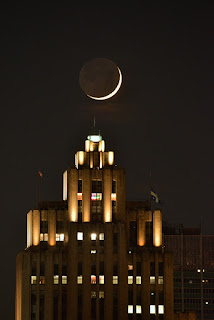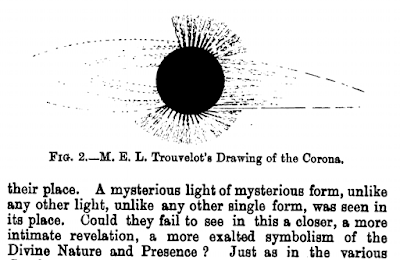Thursday, May 29, 2025
Wednesday, November 25, 2020
SPVM Eviction Of Occupy Montreal aka Occupons Montréal From Square Victoria aka Place Victoria aka "Place du Peuple" On Friday November 25th, 2011
Eleven years ago this morning, Montréal's SPVM police force was forcefully moving in to Square Victoria aka "Place du Peuple" to evict and dismantle Occupy Montréal. The night before, a Thursday night if I remember correctly, the General Assembly of Occupy Montréal had voted to voluntarily end its occupation of Square Victoria, clean up the area, and move out over the upcoming week-end. This vote to end the occupation was made known to the SPVM police mediators, and the media etc., but it seems that Montréal mayor Gérald Tremblay and the SPVM just *had* to put on a show of force, rather than give Occupy Montréal activists an opportunity to clean-up Square Victoria and leave of their own volition over the week-end. . .
Labels: Gérald Tremblay, Occupons Montréal, Occupy Montreal, Place du Peuple, Police Repression, Police Mediators, SPVM, Square Victoria
Tuesday, October 13, 2020
Dowth's "Stone Of The Seven Suns" Rayed Sun Symbols Depict Total Solar Eclipses Hypothesis Videos
Labels: Boyne Valley, Dowth, Eclipsology, Knowth, Loughcrew, Newgrange, Passage Tombs, Petroglyphs, Rayed Sun Symbols, Rock Art, Solar Eclipses, Total Solar Eclipses, Winter Solstice
Sunday, October 04, 2020
Justice For Joyce Protest Montreal October 3 2020
Tuesday, August 18, 2020
An Old Record Of The Corona By Edward Walter Maunder F.R.A.S.
I first became aware of British astronomer Edward Walter Maunder's hypothesis proposing that the winged sun symbols of ancient Egypt and Mesopotomia were inspired by a bird-like pattern that is perceivable within the sun's corona in the mid-1990s, while researching my own hypothesis that the same bird-like pattern, which I first noticed in French astronomer Serge Koutchmy's photograph of the July 11, 1991, total solar eclipse, which was published in the May 1992 issue of National Geographic magazine, was the original source of inspiration for the phoenix myth. I cited E. Walter Maunder's hypothesis, which lends support to my phoenix hypothesis, in my Eclipsology web sites which were first published to the internet in the late 1990s. Within the last few years I became aware that E. Walter Maunder's hypothesis, which had been published in the January 1st, 1897, issue of the British journal 'Knowledge', had been digitized by Google and made available in Google books. I am hereby reproducing the full text of Maunder's 'An Old Record of the Corona', with most of the original line drawing illustrations, accompanied by colour photographs of some of the images that the line drawings reproduce. I am also adding links to the text for those who wish to do more in-depth research:
AN OLD RECORD OF THE CORONA.
By E. WALTER MAUNDER, F.R.A.S.
TWO features of a total solar eclipse never fail to ‘
impress modern spectators: one, the effect of the
growth of the weird darkness — “awful” in the
legitimate and not the slang meaning of the word
—the other, the appearance of that strange halo
which encircles the dark disc of the moon when the total
phase is attained, and which we have learned to call the
“ corona.”
It is not possible to watch such an eclipse, even with all
the knowledge and preparation which science has given us,
without feeling some answer of solemnity, and it requires
no great effort of imagination to conceive of the terror and
distress such an event must have caused to the ancients,
or to savage tribes, who did not understand the meaning of the darkness, who were unprepared for its coming, who
knew not how long it would last, or, indeed, if it would
ever pass away. The “horror of great darkness” must,
indeed, have fallen upon such people, and it need cause us no surprise that eclipses figure somewhat largely in ancient
records.
Nor that the only circumstance reported is the darkness, or some circumstance connected with it. Terror at
an event so strange, so threatening, so unforeseen, must
have, in general, paralyzed the power of observation, and
the statement that “the sun had been turned into darkness”
would seem to tell the tale completely. That amazing
portent was so much in itself that there was no need or
room for the addition of trivial detail.
But some amongst the ancients had a very considerable knowledge of astronomy, and there can be little doubt that the Chaldeans—to whom the invention of the Saros, or eighteen years eclipse cycle, is supposed to be due—had a fairly clear idea as to the cause of solar eclipses. And, therefore, as they were able, to a certain extent, also to predict their occurrence, the great over whelming terror which the ignorant felt cannot have been shared by them to the same extent. Their minds will have been free to receive the impressions which the details of the eclipse would create.
And what would those impressions have been? We must remember that they worshipped the sun, moon, and planets. We are not to suppose that in so doing the more thoughtful conceived that the actual material sun, which they beheld, was itself the intrinsic Deity. The untaught and thoughtless may indeed have done so, but to the cultured there can be little doubt that the sun was regarded partly as a symbol, partly as a manifestation of the unseen, unapproachable Divinity. Its light and heat, its power of calling into active exercise the mysterious forces of germination and ripening, the universality of its influence, all seemed the fit expressions of the yet greater powers which belonged to the Invisible.
A mysterious light of mysterious form, unlike any other light, unlike any other single form, was seen in its place. Could they fail to see in this a closer, a more intimate revelation, a more exalted symbolism of the Divine Nature and Presence? Just as in the various Greek "mysteries" the student was gradually advanced from one set of symbols to another even more abtruse and esoteric, so here, on the broad face of heaven itself, vouchsafed for a brief space of time and at long intervals apart, the Deity revealed Himself to the initiated by a higher and more difficult symbol than ordinarily.
The symbol would vary in shape. We may take it for granted that the old Chaldeans, as modern astronomers to-day, had at one time or another presented to them every type of coronal structure. But there would, no doubt, be a difficulty in grasping or remembering the irregular details of the corona as seen in most eclipses. It occasionally happens, however, that the corona shows itself under a form of grand and striking simplicity. It is now widely recognized that the typical corona of the minimum of the sunspot cycle consists chiefly of two great equatorial streamers, streamers of such length that Professor Newcomb was able, in July, 1878, to trace them some eleven millions of miles from the centre of the sun.

The great eclipse of July, 1878, was most admirably observed throughout the United States, and a superb volume of the observations made of it was published by the United States Government. Of the numerous beautiful plates which accompany that volume as give in Figs. 1 and 2 rough diagrams of the drawings by Miss Kate E. Wolcott, at Black Hawk, Colorado, and M. E. L. Trouvelot, at Creston, Wyoming, as typical of a great number of others. It was this volume which, I think, convinced astronomers of the connection between the coronal form and the sun spot period, and to my own mind it brought a further conviction, to which I gave expression in an article on the sun’s corona in the Sunday Magazine for October, 1883, “that the corona of this type was the origin of ‘the ring with wings,‘ the symbol which on Assyrian monuments is always shown as floating over the head of the ring, which is designed to indicate the Presence and the Protection of the Deity." Figs. 8 and 4 show some of the forms under which the “ ring with wings " appears on Assyrian monuments, and Fig. 5 shows the “ winged disc " of Egypt. For the Egyptians, too, were astronomers and sun worshippers, and were experts in the language of symbols. Equally with the Chaldeans, the Egyptian priests should have regarded the corona as a symbolical revelation of the Deity whose usual manifestation was the sun, and accordingly we find them employing a symbol which is almost as perfect a representation of the corona of minimum as that which the Miss Wolcott’s drawing brings out two chief characteristics of the corona.
Close round the dark body of the moon we find in all eclipses a fairly regular and well-defined ring of light, the “inner” corona. This is very distinctly shown in her sketch, the ring in her original being traceable all the way round the moon. On either side of the ring of the inner corona we find the two wing like extensions. So far the resemblance to the “winged ring" is close enough. M. Trouvelot adds a third detail, and his drawing is one of the most accurate and detailed ever made, and is abundantly confirmed by the photographs. ( I will insert a composite photograph of the July 2, 2019, total solar eclipse which closely matches Étienne Trouvelot's astronomical drawing of the 1878 total solar eclipse, when I find one.)
He shows round each pole of the sun a number of diverging streamers, like a fan of light. Now the Assyrians not only frequently insert the figure of their deity within the ring, but whenever they do so they represent him with a hilt-like dress as in Fig. 4 ; and when they show the ring without the figure, the “ kilt " is given still, indicating that it is not simply a garment, but an integral part of the symbol. In some the resemblance of the pleatings of the hilt to Trouvelot‘s polar rays is practically perfect. If this be a mere chance coincidence it seems to me a most extraordinary one.
I have replaced the original small line drawing
I think there can be little doubt of the significance which would be attached to the first two characteristics. The ring of the inner corona would be looked upon as representing the Eternity of the Deity; the spreading wings as symbolizing His Protection and Power. If my suggestion is valid—it is not, of course, a matter one can prove—these symbols, about the most frequently met with of any, and so clearly designed to indicate the Presence of the Deity, are in their origin drawings of the solar corona as seen at the sunspot minimum, and as such are the earliest eclipse representations which have been preserved to us.
Monday, May 12, 2014
Sunday, September 08, 2013
Moon Venus Conjunction With Lofts Moreau Water Tower Sunday September 8, 2013
Labels: AstroPhotography, Moon, Urban AstroPhotography, Venus

























